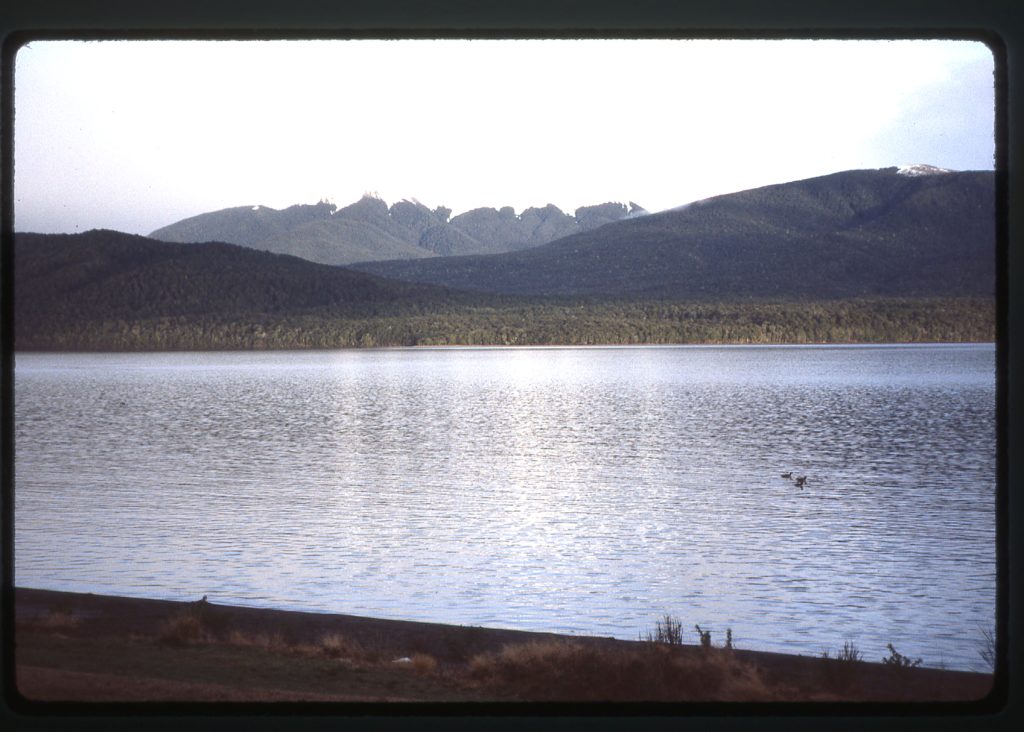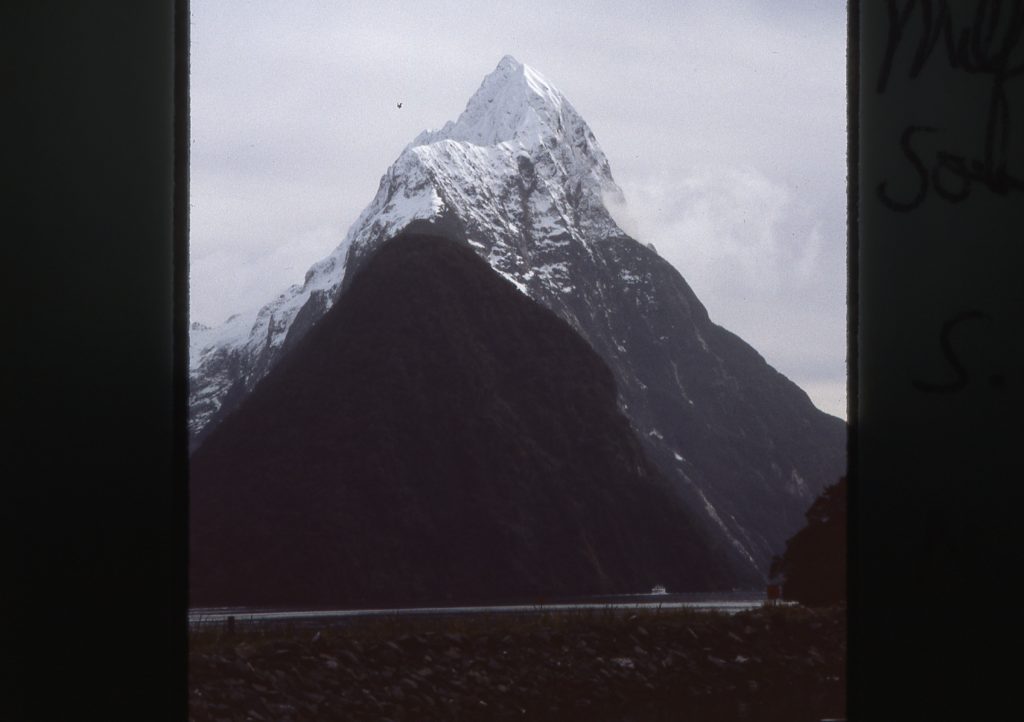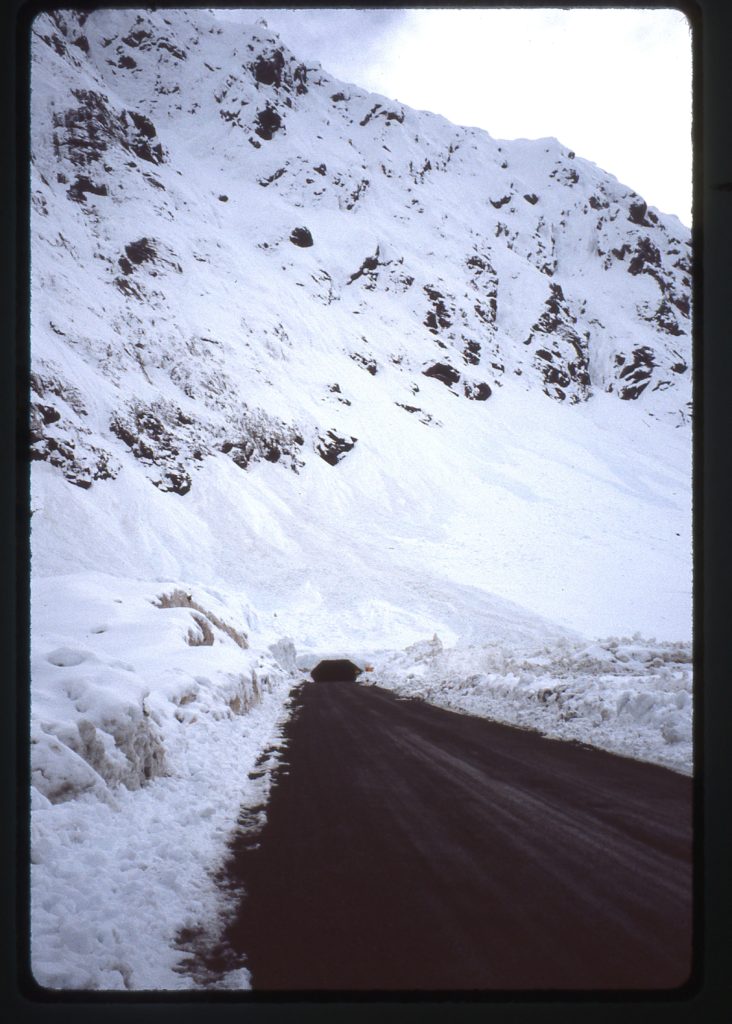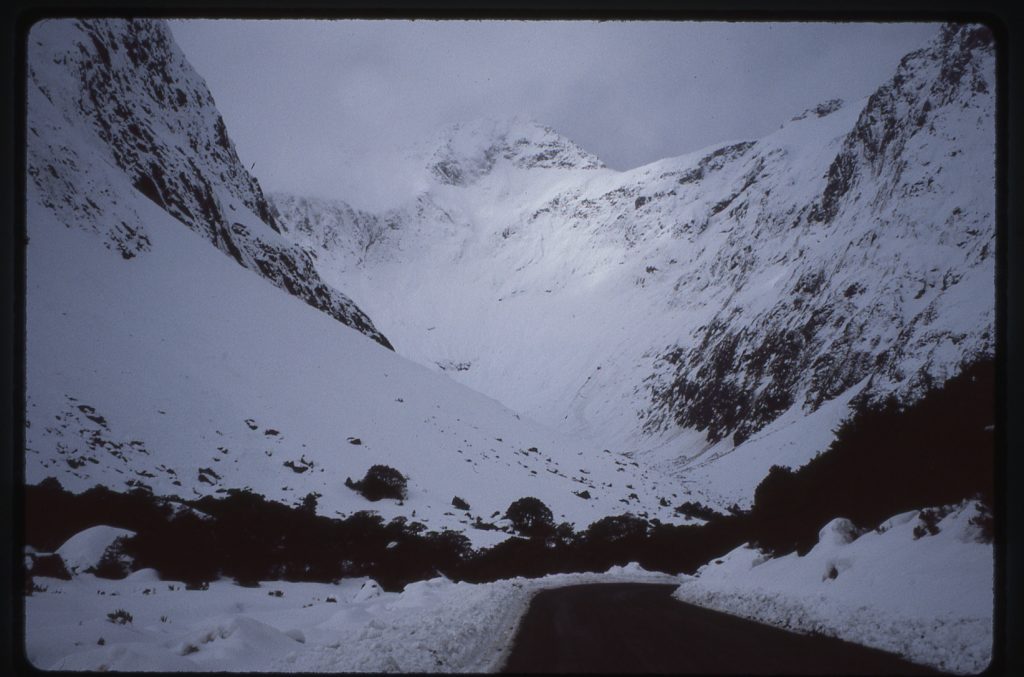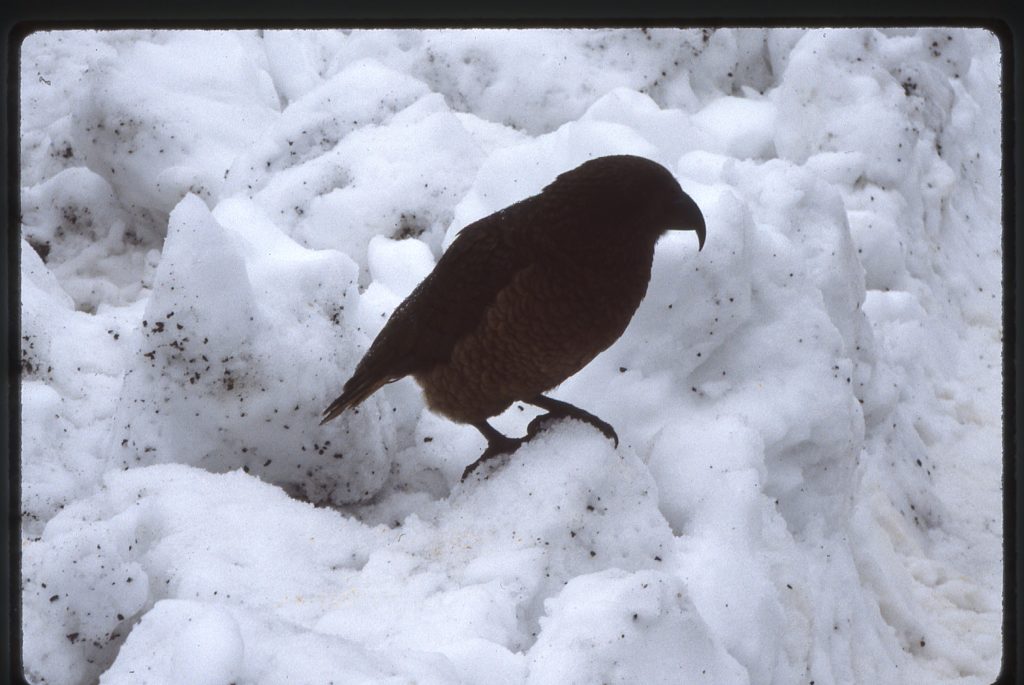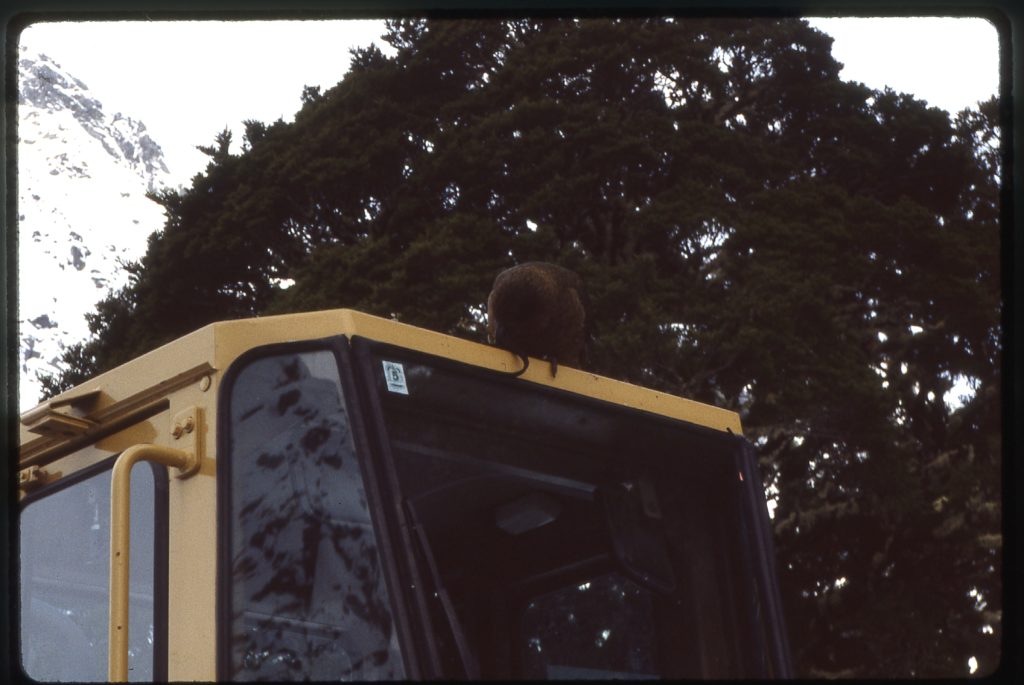I’m here to talk about keas. No, this isn’t a mis-spelling. Kias are the well-known automobiles from Korea, but a kea – well, that’s something quite different. I had never heard of a kea, until one day when I was on the South Island of New Zealand. Here’s how it all came about.
I had been in the town of Invercargill for a while, then caught a bus to Gore. At the station, I changed buses and away I went to yet another town called Te Anau. What a stroke of luck, the bus dropped me right at the door of the Te Anau Motor Park. I had taken a chance that this might be a good place to stay, and got lucky. While traveling in New Zealand, it was my custom to stay in what were known at the time as backpacker’s hostels. These were usually pretty basic places – you had a bed, often in a shared room, and shared bathroom facilities and cooking facilities with other guests. Simple fare, but all I needed at a good price while traveling. So when I arrived at Te Anau on Wednesday, August 19th of 1992, that was what I expected. Talk about lucky! They led me to a small cabin of my very own – I didn’t have to share it with anybody – and for the wonderfully-low price of $11.00NZ (at this time, a New Zealand dollar was worth about half a US dollar). This cabin had a heater, comfortable beds, toaster, hotplate, kettle, sink and even dishes, and it was all mine – the comfiest, best deal I’d found in the whole country so far. Later on in the communal kitchen, I met Lorenzo and Hanna, 2 Swiss I’d seen in other towns, and we got caught up on each other’s adventures.
Te Anau sits on the shore of Lake Te Anau, the largest lake in the South Island. It’s a small town, less than 2,000 people, and is known as the gateway to Fiordland National Park. Tourists arrive from all over the world to access the spectacular scenery and tramping (hiking) opportunities in this part of the country.
After a good sleep, I paid for another night, then walked around the town window-shopping while I waited for a bus to arrive at the terminal. Once there, I boarded and away we went. Something I need to tell you about all these buses I was using – at the time, New Zealand offered a type of pass, available only to foreign tourists, which allowed almost unlimited travel on buses, trains and the Inter-Island Ferry. It was a bargain, and I used it constantly during my month in the country. The bus I was boarding today was part of traveling on my pass.
The 3-hour, 80-mile bus ride was through typically-amazing South Island scenery. We traveled north, and ended at a world-famous beauty spot known as Milford Sound. The view from the head of the sound is immediately-recognizable to people everywhere. You must pardon the grey, gloomy image, but it rains a lot in the Kiwi winter and this day was no exception. Nevertheless, the iconic image of Mitre Peak is world-famous. The mountain rises directly from the sea and soars to 5,550 feet very steeply.
After a good look around, I decided to hitch a ride back the way I’d come on the bus. My ride took me up to and through the Homer Tunnel, then dropped me off. The tunnel is 0.75 miles long.
The east end, in the Hollyford Valley, sits at 3,100′ above sea level, while the west end, the side of Milford Sound, is at around 2,685′. There I stood at the east end of the tunnel – just me, lots of snow and a big front-end loader.
Why had I taken the trouble to hitch a ride a dozen miles back to this spot when I could have just waited a bit longer and taken a warm, comfy bus instead? Here’s why.
Remember the title of this piece? – “Kea”. Well, I was here to find a kea. Sorry it took this long to get around to the point, but this was my D-Day, my big chance. Okay, “so what the hell is a kea?” you might ask. A kea, Nestor notabilis, is a large species of parrot found on the South Island of New Zealand – it lives in forests and in alpine regions, and is in fact the only alpine parrot in the world. These are not small birds, reaching a length of up to 19 inches. They are an olive-green color with a brilliant orange on the underside of the wings. Keas are now protected, but up until 1986 thousands were slaughtered by sheep farmers who feared that they attacked livestock. Keas have narrow, curved, extremely sharp beaks and one could do you serious damage if you ever pissed one off. They are incredibly smart. Researchers have proven that keas can solve logical puzzles, can work together to solve problems and have filmed them preparing and using tools.
Keas have an unstoppable urge to investigate everything, and can do a lot of damage in their spare time. Kiwis consider them to be pests, while tourists love them. They are known as “the clown of the mountains”, and will make off with just about anything that catches their eye and isn’t tied down. So here I was, standing in the snow at 3,100 feet all by my lonesome – or was I? Within minutes, I saw one fly in and land on the snow. That in itself was really remarkable, a parrot on snow – I’d always thought of parrots as birds of warm climates. I’m sorry my pictures aren’t of higher quality – the bright snow seems to have overexposed them, leaving the birds rather dark.
As the minutes passed, a few more flew in. I was really hoping that I could see first-hand how mischievous they could be, and I was not to be disappointed. One of them landed on the roof of that big loader that was parked there for snow removal and went right to work. Within minutes, it had loosened the gasket that sealed the top of the windshield and was pulling it off. If I hadn’t been handling my camera to take the picture, I would have been clapping and jumping up and down with glee – a dream come true for the birder tourist!!
Watching the kea at work, carefully and systematically pulling off the rubber gasket from the machine, was fascinating. It was as if it had done it every day of its life and knew exactly what it was doing and how to proceed. By the time my bus (the same one I’d taken to Milford Sound earlier in the day) arrived at my end of the tunnel and pulled over to stop (I had asked the driver to please pick me up on his way back), the kea had removed a couple of feet of the gasket and was still hard at it as I boarded.
It would have been hard to wipe the grin off my face as we drove away. The weather cleared a bit for the 70-mile ride back to Te Anau, allowing us to really enjoy the beauty of this part of the island. I spent one more day in Te Anau, then moved on to other places on the South Island. Having seen keas performing their magic at Homer Tunnel still remains a highlight of my trip.

